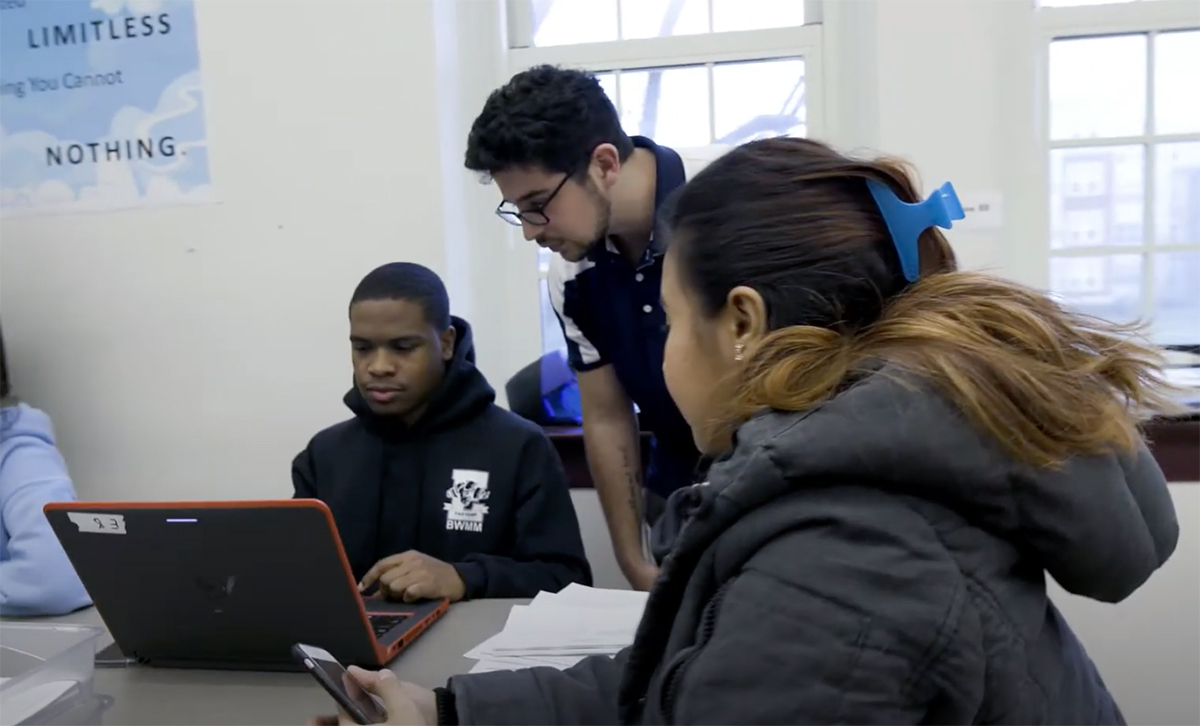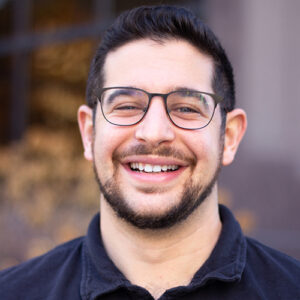Educator’s View: This School Year Demands a New Approach to Teaching. Here’s One
Award-winning educator Kareem Farah tells how he changed his inner-city HS math class with self-produced video lessons and mastery-based learning

Get stories like these delivered straight to your inbox. Sign up for The 74 Newsletter
Backpacks, fresh notebooks, sharpened pencils and new goals. I love this time of year, but I’m worried students and teachers are returning to schools that are at a breaking point.
Students’ learning needs are enormous, with recent national data showing they’re making gains, but not fast enough to close gaps associated with the pandemic in a timely way. And student well-being, which directly affects academics, is in crisis: More than 44% of high schoolers reported feeling persistently sad or hopeless over the past year.
The picture is bleak for teachers, too. Some schools face high levels of vacancies, meaning teachers will continue to have to cover other classes, staff bus lines and monitor lunchrooms rather than giving struggling students extra help and working on lesson plans.
Given these extraordinary circumstances, a return to traditional methods of teaching and anything resembling a one-size-fits-all approach just won’t work for many school communities. Students who’ve lost ground will stay behind, as will those who continue to miss class.
While in-person teaching is essential, it needs a refresh. Kids no longer need to spend the bulk of their class time listening to teachers talk from the front of the room and passively taking notes or answering questions. Instead, teachers can more effectively use whole-group instruction, reserving it for things like rich class discussions, and can replace routine lectures with short video lessons they create and pair with assignments. Students can then work at their own pace, while teachers address kids’ needs individually and in small groups.
I made this change, toward differentiated, mastery-based learning, which more schools are trying, when I was a math teacher at Eastern Senior High School in Washington, D.C. Today, I train teachers to redesign their classrooms by replacing live lectures with their own instructional videos, letting students work at their own pace and assessing them based on mastery. It isn’t a model that is tied to a particular grade level, content area or curriculum; any teacher can do it anywhere.
The challenges I faced, though pre-pandemic, were somewhat similar to those that educators grapple with today. I was teaching traditionally, and students were tuned out. Some found my lectures too slow, while others couldn’t keep up. I had no time to work one-on-one with students and get to know them, and many kids missed class because of responsibilities and challenges outside of school.
Thankfully I had a colleague who used innovative methods and helped me transform my instruction to respond to student needs. Today’s teachers are even more prepared than I was to try something like this. Schools have new technology tools, and students and teachers have new digital skills. Educators and school leaders are open to and excited about innovative approaches that personalize instruction and help students keep up when they are out of school. This can look a little different across subjects and grades. For example, young students should get more structure than older students, their videos should be shorter and they should spend less time working on their own.
In my math class, students came to appreciate moving through the content, toward mastery, more independently. This approach freed me up to help them — a kind of personalized instruction I couldn’t offer before. If there were 10 lessons to complete over three weeks, students worked on them at a pace that was right for them. I could assess them and intervene when necessary. Struggling students always got extra support, while those moving at a quicker pace could deepen their learning and work on extension lessons, getting the kind of educational experience they deserved.
All students could access the video-based lessons at any time, which was particularly helpful for those who were absent or wanted to press pause and rewind. Overall, my students were happier and felt more supported, and I was less stressed and found my passion for teaching again.
Changes I noticed immediately in my classroom included an improvement in attendance and engagement. One student who rarely came to class started showing up almost every day. He knew he could pick up where he left off without feeling embarrassed, but he also knew I wasn’t going to let him slip through the cracks. He approached me one afternoon and said, “Mr. Farah, I can’t finesse your class anymore.”
More recently, I was visiting a sixth-grade English language arts teacher’s classroom, delivering training on this approach, and one boy, an emerging bilingual learner, whispered to me that it was the first time he was able to comfortably ask his teacher for help.
It’s urgent that leaders and policymakers take this moment to listen to students and trust teachers to create new and better learning environments. In doing so, the nation just might emerge from this crisis with schools that meet the needs of diverse learners and empower all kids to reach their full potential.
Get stories like these delivered straight to your inbox. Sign up for The 74 Newsletter

;)
